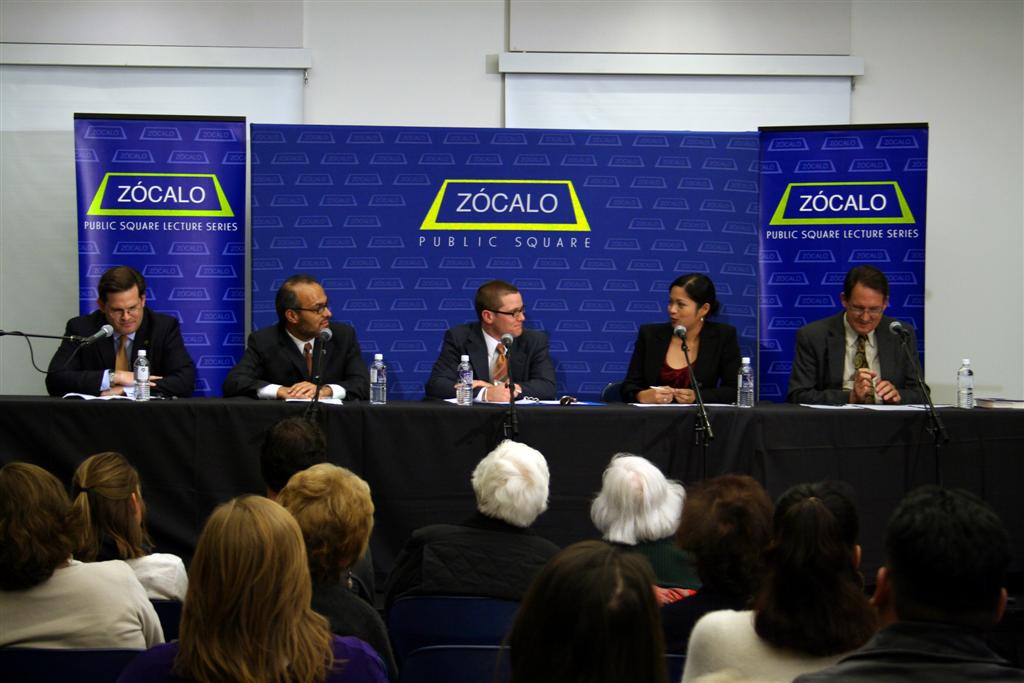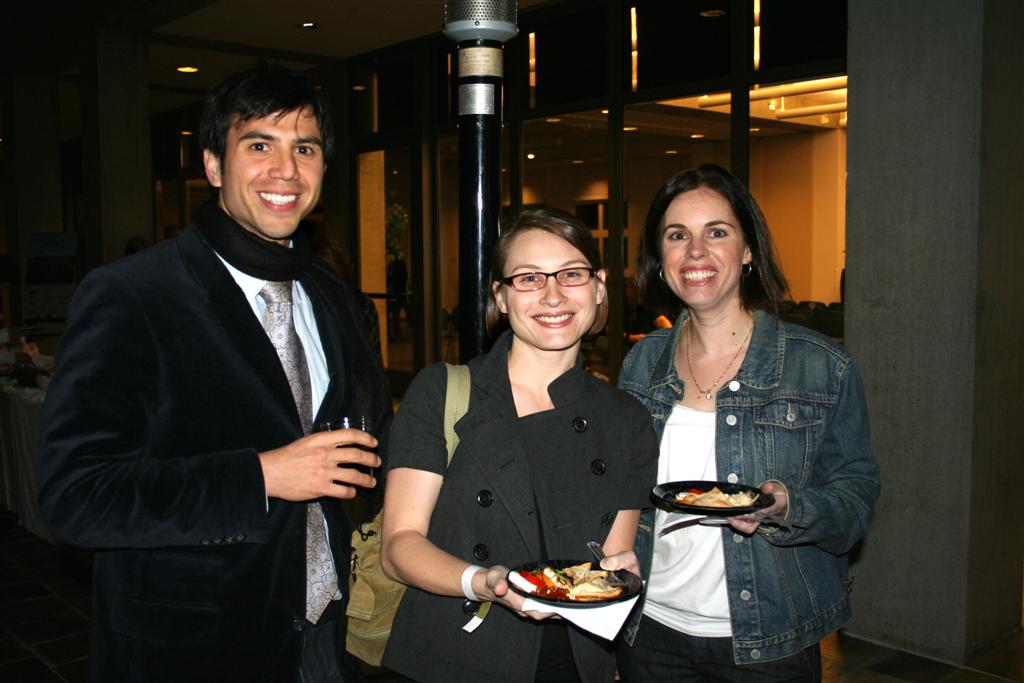
In the 600-page tome that was Congress’ failed attempt at an immigration overhaul, about 20 pages were devoted to the question of integration.
That, said the Migration Policy Institute’s Laureen Laglagaron at the Skirball Cultural Center, was indicative of how much time and energy was spent on a question that seems paramount: once people enter the country, how do they become Americans?
Laglagaron joined USC’s Dowell Myers, Alfonso Aguilar of U.S. Citizenship and Immigration Services, José Luis Gutiérrez of the Illinois Office of New Americans, and moderator Tomás Jiménez to discuss whether America needs an integration policy, which branch of government should make it, and what impact it all has on the concept of American identity.
“Immigrants hold a mirror to society,” Myers said. “And that’s a good thing.”
Testing America and Americanness
 Holding up a mirror today, according to the panelists, would reveal something like this: Americans are rapidly aging but rapidly absorbing
Holding up a mirror today, according to the panelists, would reveal something like this: Americans are rapidly aging but rapidly absorbing new young immigrants. The country is set to naturalize a million new citizens this year, and one million immigrants will become permanent residents. Thousands of volunteers have been trained to teach English as a second language. Sixty percent of Mexican immigrants own a home within 30 years of moving to the U.S. Children of immigrants overwhelmingly speak English; the third generation even begins to lose the native language. And the country has accomplished assimilation before: the largest ancestry group in America is still German, as Myers noted, and Dwight D. Eisenhower spoke German at home before he fought Germany abroad.
But German immigrants by necessity dropped their language and much of their culture during the World Wars. In fact, assimilating once meant adopting, as Myers noted, “Anglo conformity.” Policies at the turn of the last century, Jiménez noted, were chauvinistic and counterproductive. Even today, calls for assimilation are sometimes simply veiled xenophobia. But generally, and certainly on the panel, integration primarily seems to involve learning civics and language, not dropping another culture or faith.
It’s not just multiple choice anymore
Those key factors to integrating aren’t always easy to accomplish while working long work hours. Some immigrants also feel uncomfortable pursuing education and government help, particularly since there isn’t much of it: although language proficiency is required for citizenship, Laglagaron noted that it would take 289 million hours of English instruction to make proficient the immigrants of Los Angeles County alone. “It’s quite a lot,” she said to a murmuring crowd. “We’re not quite prepared.”
In addition to English proficiency, a new citizenship test sets another high standard immigrants must meet. The conceptual questions it asks about ideas like the rule of law require greater education and language skills than the former mostly multiple-choice test. But, as the panelists noted, government doesn’t provide a way to get those skills. The questions are hard enough to stump native-born Americans, too.
“It pained me to see reporters going out to the streets to ask Americans about democracy and Americans couldn’t answer them,” Aguilar said. “I was concerned with that. If a democracy is based on ideals, you have to master those ideals.” He pointed to civic pride – a knowledge of history, good and bad, and a sense of shared ideals – as the key to integrating.
“When you marry someone, you learn about the history of your spouse. You know the mother-in-law and the crazy uncle,” he said. “That’s the history of the family.”
What the government can do
Some states, like Gutiérrez’s Illinois, are beginning to step in where the federal government hasn’t. Gutiérrez’s Office of New Americans is the first of its kind, though other states are starting to follow suit. The office provides English lessons, assistance accessing healthcare and education, and civics lessons and services. Gutiérrez noted that the state office works with local community organizations and stays open well beyond normal business hours.
But many states and cities are struggling with their immigrant populations without any federal help, as Myers noted. “The city of Santa Ana incorporated so many Mexican immigrants. Who are they incorporating them for?” he asked. “What happens to an assimilated Mexican homeowner? Do they stay in Santa Ana or do they move to Anaheim or Las Vegas? Santa Ana is doing the nation’s business.”
How much government is too much?
The level of federal government involvement provoked some debate among the panelists. Though she did appreciate the role of local communities, Laglagaron noted that any English language teachers should be certified nationally, and that volunteers couldn’t do it alone. She added that it was the government’s job to enforce federal law to ensure meaningful access to social services.
Gutiérrez agreed. “I believe the federal government needs to play a bigger role,” he said. “Civic education. There is no way the states are going to do that. How can we demand that an immigrant be proud of being an American when they don’t know what the flag means?”
More practically, Aguilar noted, it might be helpful to know what a stop sign is. He remembered asking incoming immigrants whether a stop sign is the rule of law. They would answer, he said with a mock-shrug, that it’s “just a suggestion.”
“In the U.S., a stop sign means stop,” he said to a laugh from the crowd. “The rule of law is a fundamental concept that lets people live together in a civilized manner.” But, he said, the government role should be as limited as possible, and as creative with limited resources as possible, pursuing, for example, mentorship programs rather than top-down education. He noted that while immigration happens at the federal level – and, the panelists agreed, there is broad consensus in Washington for immigration reform – integration happens at a local level.
“I wouldn’t call for a new program on assimilation,” he said, “Frankly, we would get it wrong.”
Watch the video here.
See more photos here.
*Photos by Aaron Salcido.




Send A Letter To the Editors